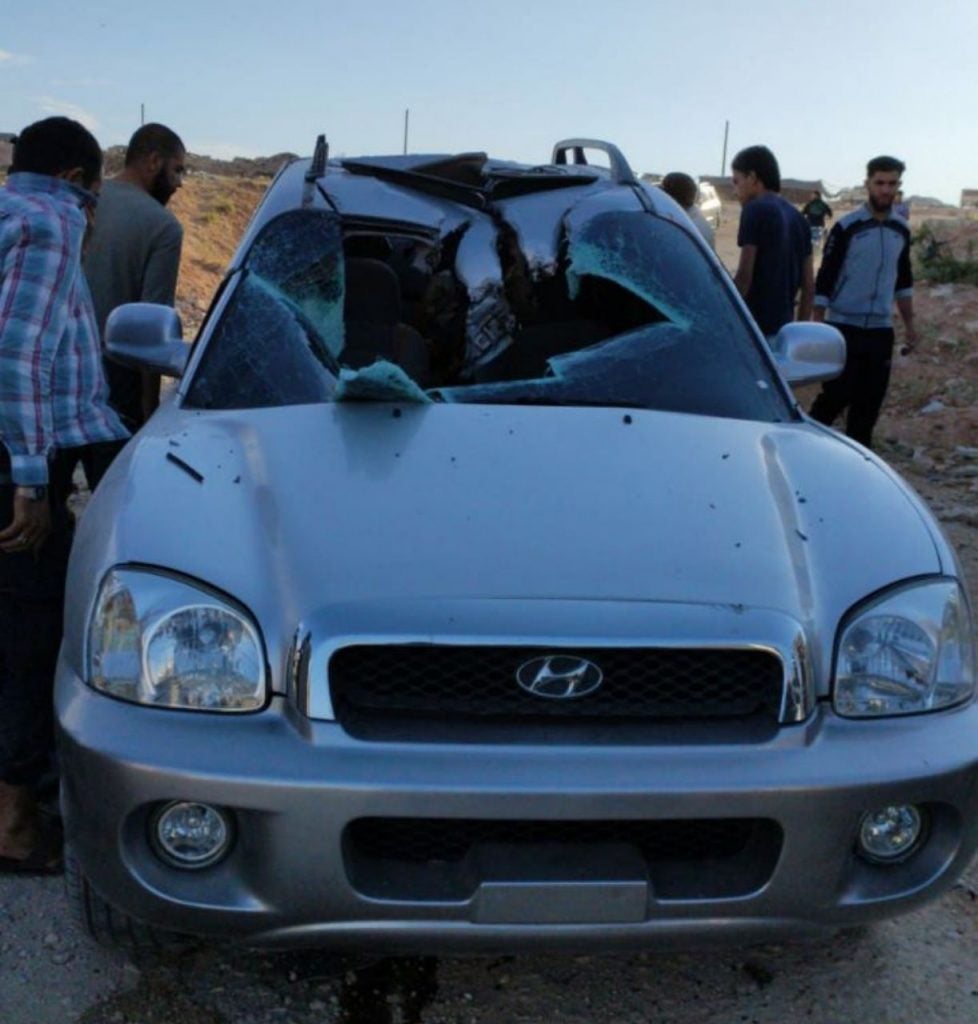The Kinetic Hellfire Missile Strikes Again in Syria
Just over a year ago, we at Overt Defense reported on a new kinetic variant of the Hellfire AGM-114 missile – the Hellfire AGM-114R9X. It appears the Kinetic Hellfire has been deployed again this week, in a strike in Idlib which reportedly killed two high-ranking Syrian al-Qaeda commanders.
The strike, likely launched from an MQ-9 occurred on 14 June, and is said to have successfully targeted Qassam al-Urduni and Bilal al-Sanaani, both previously believed to be senior figures within Hayat Tahrir al-Sham, a group formed from Al-Nusra Front, also known as al-Qaeda in Syria. Syrian Observatory for Human Rights has suggested that the men were also affiliated with the al-Qaida linked Hurras al-Din, a hardcore breakaway group active in Latakia, Hama, western Aleppo and the Idlib enclave.
Below is some video of the damaged vehicle shared by Hassan Hassan of the Center for Global Policy:
The drone-launched strike hit a Hyundai Santa Fe SUV carrying the two commanders. The R9X, sometimes referred to by the media as the ‘Ninja Missile’, smashed through the centre of the vehicle’s roof, down through the cab and floor of the vehicle and into the road.
The Hellfire R9X was reportedly developed to minimise collateral damage from drone strikes. As a result, the R9X has no explosive warhead, instead, coupling the precision of the Hellfire’s semi-active laser homing guidance system with a kinetic warhead – of currently unknown mass. It is believed that the R9X was used in the strike which killed Abu Khayr Al Masri, Al Qaeda’s leader in Syria in February 2017. As well as Jamal Ahmad Mohammad Al Badawi, a key figure with Al-Qaeda in Yemen, in January 2019.
There is little doubt that the missile used was the R9X, with limited blast damage, fire or fragmentation present as well as the characteristic damage profile seen in the vehicle. We have seen the same sort of damage caused in other R9X strikes, including the ‘cuts’ made in the vehicle’s roof by the blades which are believed to be part of the missile’s design – likely for stabilisation and increased surface area impact. How much kinetic energy the R9X imparts is unknown but the inert warhead allows it to strike its target without relying on explosive energy. We have discussed the missile design in the past, here.
From the damage to the vehicle, it may be possible that the Hyundai was struck by two R9Xs, one striking the front of the cab and another the rear. There also appears to be some wreckage from the vehicle and possibly the missile itself in a small crater behind the SUV. The strike seemingly occurred on a slight hill and the vehicle probably rolled forward several metres after the missile or missiles hit. What is clear is that the R9X is a very specific capability linked to US-operated drones, the distinguishing damage characteristics remove any deniability from the strike with the damage acting almost as a deliberate calling card.

